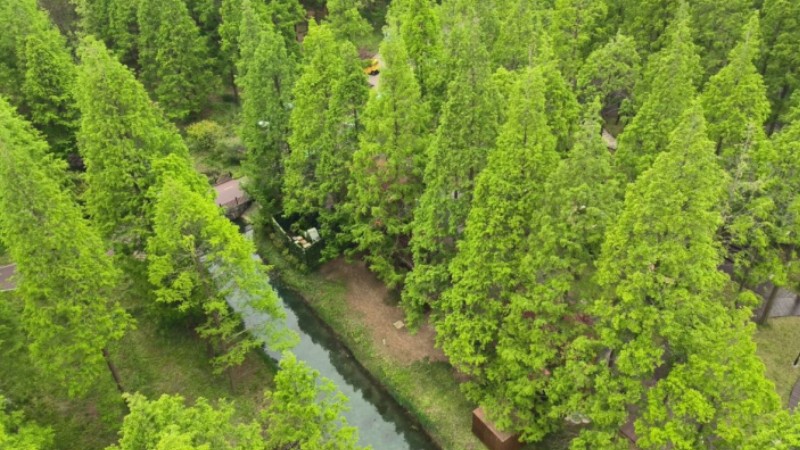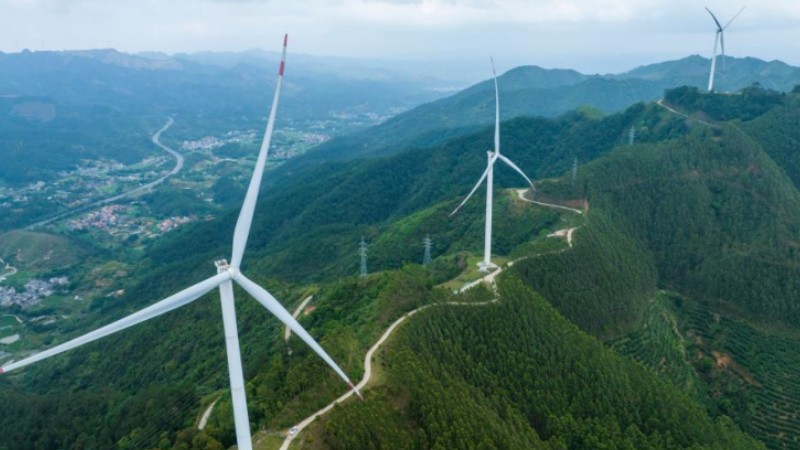Building zero-carbon village in China's coal-rich province
TAIYUAN, May 8 (Xinhua) -- At the photovoltaic charging station in Zhuangshang Village, where dozens of agricultural vehicles are parked, farmer Chen Jiuhong is charging his electric tricycle.
"A full charge, enabling a drive of 50 km, costs less than 2 yuan (about 29 U.S. cents), just one-fifth of the cost for the conventional diesel-fueled vehicles to drive the same distance," Chen said. "Our farm machinery, such as weeders and spreaders, are all powered by electricity now, which is both cheap and environmentally friendly."
Amid the country's pursuit of green development, Zhuangshang, Ruicheng County of north China's coal-rich Shanxi Province, has bid farewell to traditional coal burning and reached carbon neutrality thanks to the use of photovoltaic energy.
The village has recently won the title of zero-carbon energy demonstration village in China, jointly recognized by the Chinese Ministry of Agriculture and Rural Affairs, the United Nations Development Programme (UNDP), and the Global Environment Facility (GEF).
According to the village Party chief Du Kanglei, Zhuangshang began to promote photovoltaic power generation in 2019, gradually replacing coal and diesel with clean energy.
"Motorcycles have been replaced by electric tricycles, diesel lawn mowers have been changed into electric lawn mowers, and coal is no longer burned for cooking or heating," Du added.
Today in Zhuangshang Village, the roofs of the farmhouses are equipped with blue photovoltaic panels. Villager Zhang Baomin said his photovoltaic panels can generate enough electricity to power all his household appliances.
"My rice cooker, air conditioner, and electric heater are all powered by electricity, and the surplus electricity can be stored or sold (to the grid)," he said.
"Diesel-powered motorcycles used to ply the streets, spewing black smoke, but they have been replaced by electric vehicles," 81-year-old villager Zhang Pingding said. "The village has become cleaner after the use of photovoltaic power."
In order to make better use of solar power, the village is transforming barren lands into photovoltaic facilities. A 173-meter-long photovoltaic corridor has been constructed in a large wasteland adjacent to the Yellow River. The corridor, with 320 photovoltaic panels, generates 220,000 kWh of electricity annually.
An abandoned traditional cave dwelling has been renovated into a photovoltaic courtyard where 192 photovoltaic panels have been installed, producing 130,000 kWh of electricity per year.
With a roof made of photovoltaic panels to protect it from wind and rain, the courtyard provides another facility for the locals to sit and enjoy a cup of tea.
Du Kanglei said the village plans to turn more abandoned cave dwellings into photovoltaic courtyards.
The green transformation of Zhuangshang is part of the Enabling Zero Carbon Energy in Rural Towns and Villages in China Project, funded by the Ministry of Finance and the GEF, and officially launched by the Ministry of Agriculture and Rural Affairs and the UNDP in 2022.
From April 2022 to April 2023, the village generated a total of 2.8 million kWh of electricity, saving a total of 1,156 tonnes of standard coal, and reducing 2,882 tonnes of carbon dioxide emissions.
In recent years, the coal-rich province of Shanxi has carried out pilot projects for green coal mining, and it will speed up the construction of a green energy supply system, aiming to grow the installed capacity of new and clean energy to 54 percent, according to a government report released in January.
China is committed to establishing many more zero-carbon emission rural towns and villages in the future, as the clean energy practice of Zhuangshang Village is exemplary, said Wang Jiuchen, with the Ministry of Agriculture and Rural Affairs rural energy and environment agency.
Photos
Related Stories
- China's efforts reduce carbon emission intensity in agriculture: report
- Notable achievements made in construction of zero-carbon demonstration zone in Boao
- What China's green transition means for the world
- Experts pool wisdom on building resilient cities in an uncertain world
- Inner Mongolia Autonomous Region seeks to cover 91 percent of its towns and cities with clean energy heating by the end of 2023: official
- China's supreme court specifies judicial services to assist carbon reduction
Copyright © 2023 People's Daily Online. All Rights Reserved.









